Whether it’s your 8 a.m. lecture, your classic triple dorm or the office hours you’re banking on for that extra 0.01 point, it’s not often you find true quiet and tranquility on UCLA’s campus. However, amidst the chaos, there are a few rare spots that feel like stepping into a slower, softer world. One of those is the Franklin D. Murphy Sculpture Garden—a five-acre retreat built as a fusion of landscape and learning. It’s one of the few places where you can bask in the shade of an Auguste Rodin sculpture while answering emails, surrounded by sculptures that invite you to slow down—and stay curious.
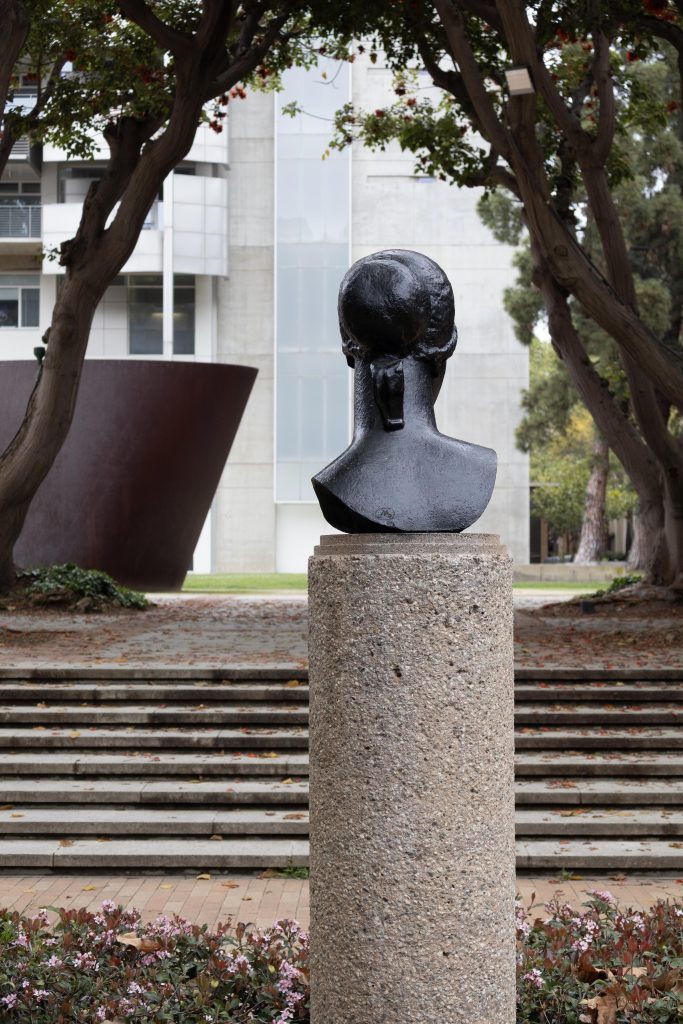
A bust gazes towards the Broad Art Center. Created by French sculptor Aristide Maillol in 1923, "Heroic Head" now stands in memory of Mary E. Freiberg, a respected former member of the UCLA Arts Council. Photographed by Julia Gu/BruinLife.
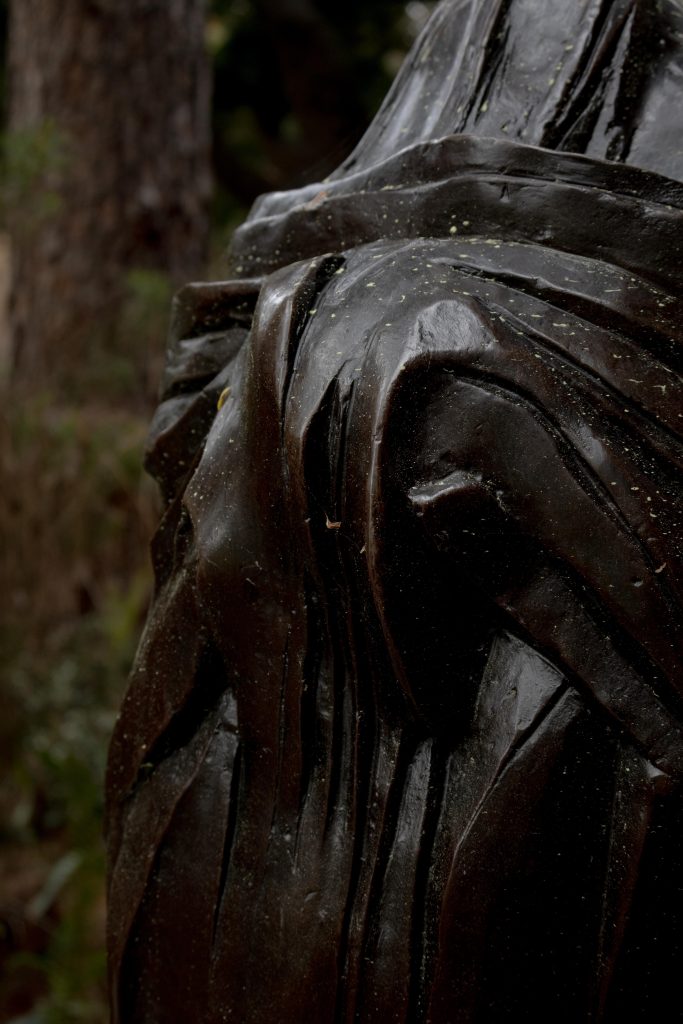
"Prophet: Homage to Rico Lebrun" is a 1971 work by Leonard Baskin that pays tribute to the Italian-American artist Rico Lebrun. The sculpture honors the legacy of Franklin D. Murphy. Photographed by Julia Gu/BruinLife.
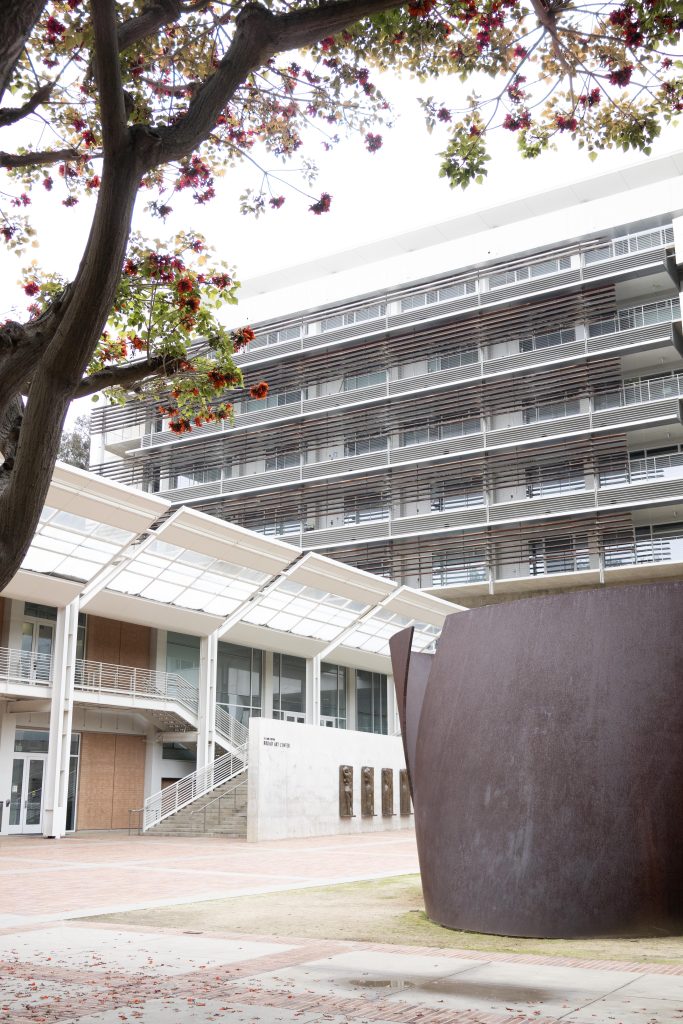
"Torqued Ellipse UCLA" is a 2006 sculpture by American sculptor Richard Serra. The steel work is part of "Torqued Ellipses," a lifelong series with works now found across the United States. Photographed by Julia Gu/BruinLife.
The garden serves as a sanctuary from the stress induced by, what feels like, weekly midterms. The slanted lawn creates the perfect position to lie down, enjoy the breeze rustling through the grass and appreciate a radiant 79℉ day. This peaceful haven is also among the most esteemed outdoor sculpture collections in the country, featuring over 70 works from the 19th and 20th centuries by artists like Henri Matisse and Rodin. The immersive experience of decompressing in such a historically rich environment is a privilege I believe should be utilized for all it’s worth.
Tucked into the far end of North Campus, the garden can be a little disorienting to find—especially if you’re not an art major. But that’s part of the magic. After hauling up the Janss Steps (and skipping the sixth one), pass Royce Hall and make a left until you hit Charles E. Young Research Library, aka all-nighter HQ. From there, turn right and enter through the cluster of buildings, and suddenly—it’s quiet. The vast lawn spreads out beneath you, with scattered sculptures emerging quietly from between the trees. It feels like you’ve stumbled into a hidden realm on campus—one where time moves slower and your body and brain get to just sit and breathe.
The garden itself unfolds across three distinct zones: a formal brick plaza, a walkway lined with South African coral trees and a gently sloping lawn interspersed with winding, textured paths. This thoughtful design makes the space feel both open and intimate, offering shaded corners for studying, stretches of grass for lounging and moments of discovery as sculptures peek out from behind trees or curve along the pathways.
Dedicated by UCLA’s third chancellor—Franklin D. Murphy—the garden was composed to serve as an educationally motivating atmosphere for students and staff. Murphy believed that for art to be truly appreciated, it shouldn’t be confined to the walls of a museum but integrated into daily life. Now run by the Hammer Museum, the garden continues to function as both an artistic and contemplative space, bringing together figural and abstract works that enhance the landscape’s natural beauty.

"War Remembrance II" is a 1960-61 piece by Romanian-born sculptor Sorel Etrog in the wake of the Second World War. Filled with symbolism, its intricate swirls evoke a kind of chaos. Photographed by Julia Gu/BruinLife.
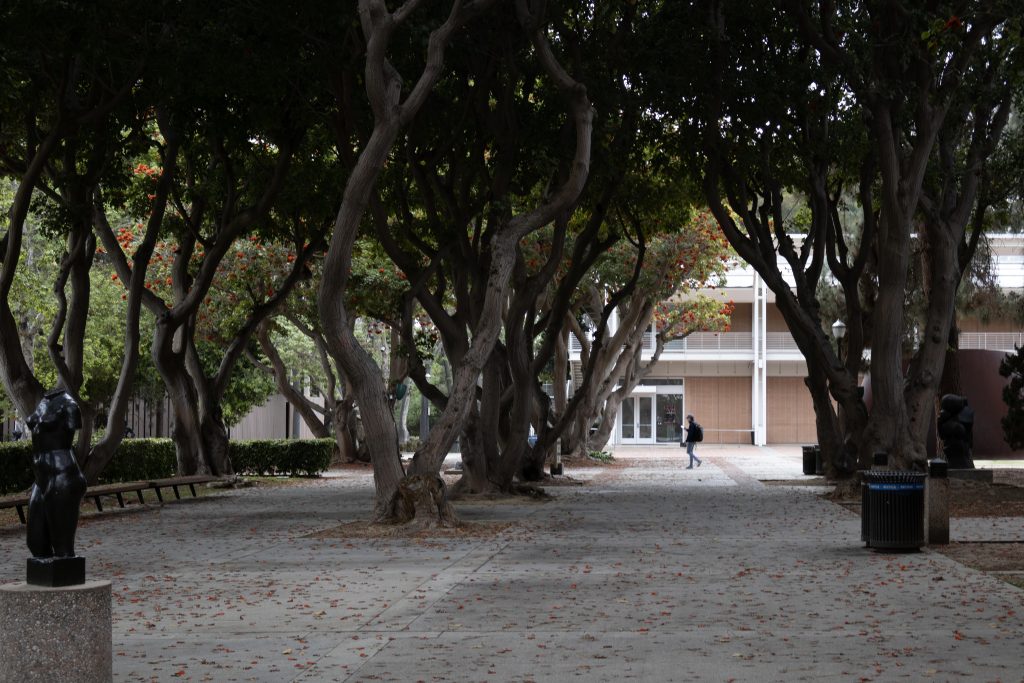
A passerby walks between the trees at the north end of the Franklin D. Murphy Sculpture Garden. Photographed by Julia Gu/BruinLife.
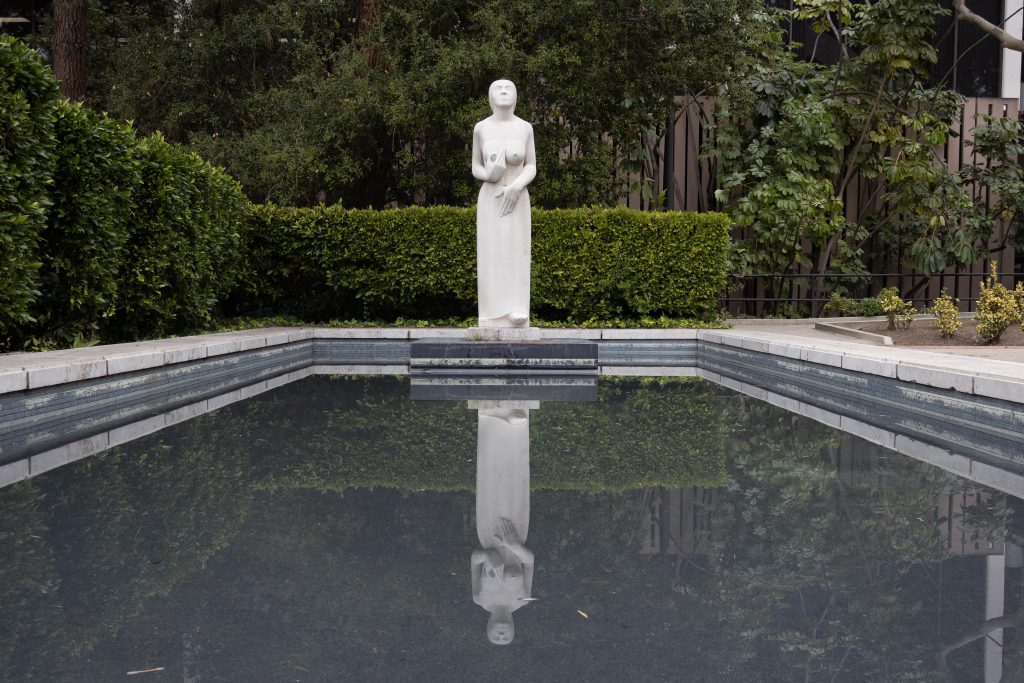
"Mulier," a piece by British sculptor Eric Gill, stands proudly with its reflection by the Charles E. Young Research Library. Photographed by Julia Gu/BruinLife.
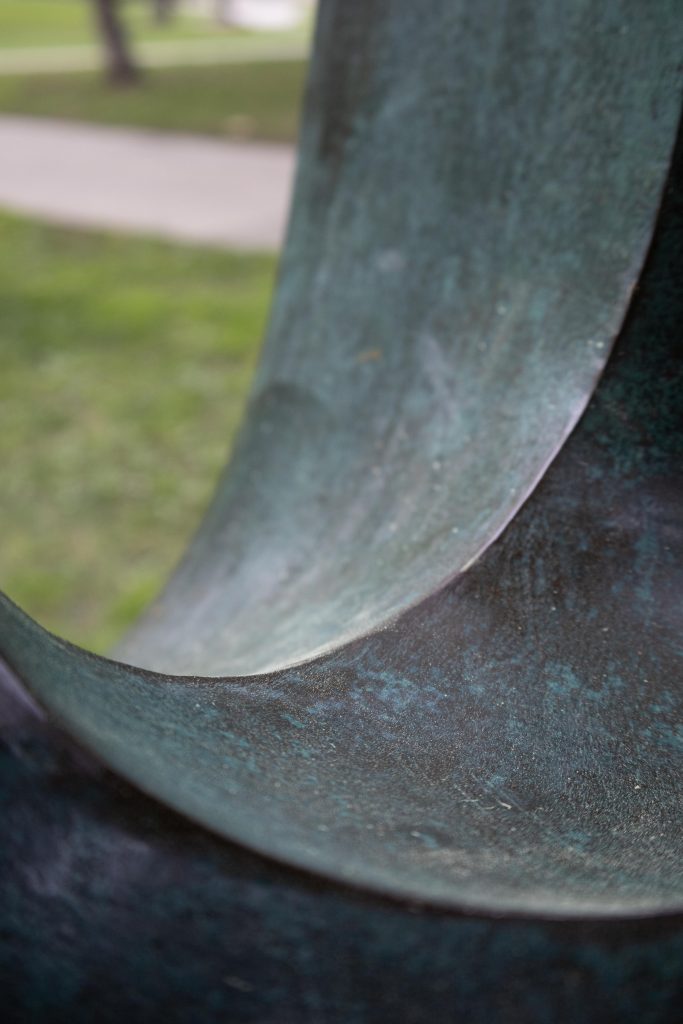
Detail on "Elegy III," a 1966 piece by English sculptor Barbara Hepworth. With Modernistic influences, the sculpture is a smooth oval form with three hollowed faces that meet in the center. Photographed by Julia Gu/BruinLife.
Most of the sculptures are distributed as independent pieces across the lawn, transforming a standard green space into a dynamic, open-air gallery. However, a few interactive pieces encourage deeper engagement, letting students not only observe but become part of the creative flow. For example, right outside the Broad Art Center stands Richard Serra’s “Torqued Ellipse UCLA,” a monumental sculpture made of COR-TEN steel that rises approximately 12 feet tall. Its twisted, oval form and single opening invite students to step inside and experience the disorienting interior. Serra’s work plays with perception—your body tilts, your senses shift—it’s meant to reframe how you move through the world.
The ability to casually interact with these monuments on a daily basis is a privilege, and the best part is the space can be used for so much more than just that. The open lawn allows students to unplug and be present in nature, but also keep up with the academic grind in a more peaceful spot than Powell, where the pressure is high and the Wi-Fi is famously unreliable. I’ve seen students journal under the coral trees, take graduation photos by the Rodin or blast jazz on a speaker while sketching for class. Once, I passed a student fast asleep beneath the trees, a worn copy of Greek philosophy resting on their chest—an unexpectedly poetic moment of stillness in the middle of a hectic week.
Take a detour. Find quiet. Breathe in the art for a second. You don’t need a museum pass, an appointment or even a plan—just time, and a willingness to pause. In a world moving faster every day, the Franklin D. Murphy Sculpture Garden is a quiet freedom we often forget we need.
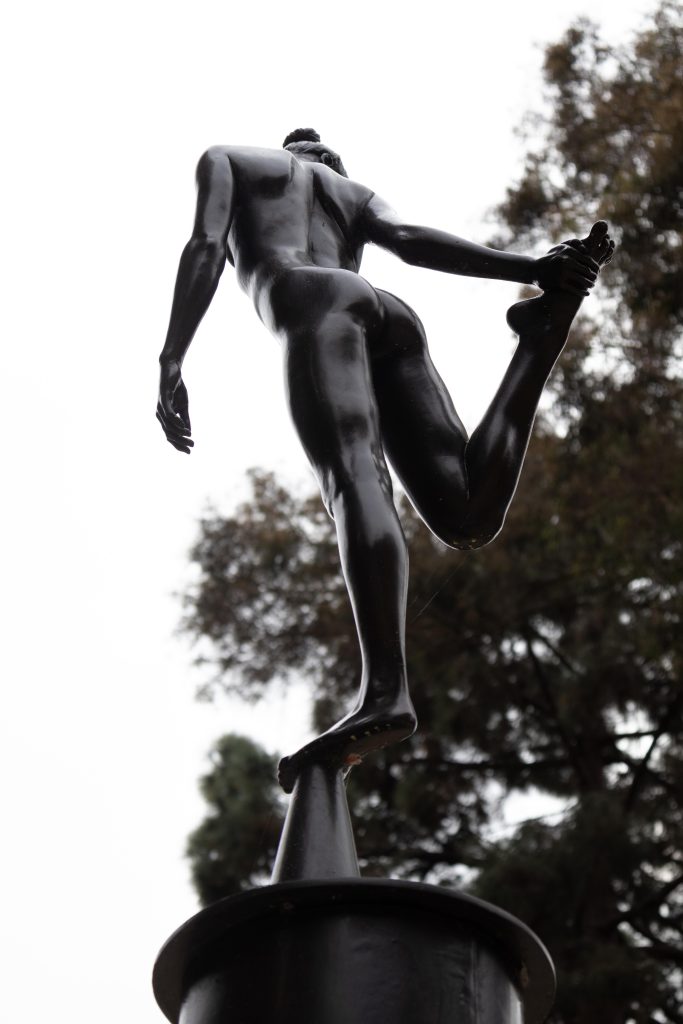
"Dance Column II" stands next to its sister in the Franklin D. Murphy Sculpture Garden. Sculpted by Robert Graham in 1978, it depicts the ghostly presence of dancing bodies along its length. Photographed by Julia Gu/BruinLife.
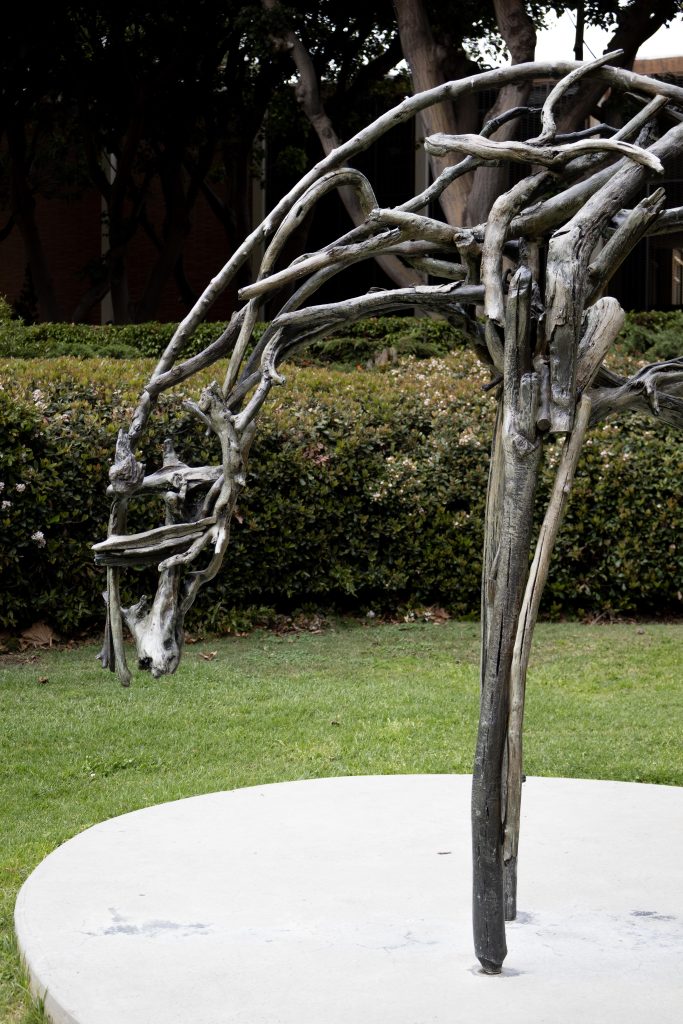
Deborah Butterfield is an American sculptor known for her sculptures of horses, often made from found materials. "Pensive" is a 1996 work given to the garden by Marcia Simon Weisman, a close friend of Franklin D. Murphy. Photographed by Julia Gu/BruinLife.
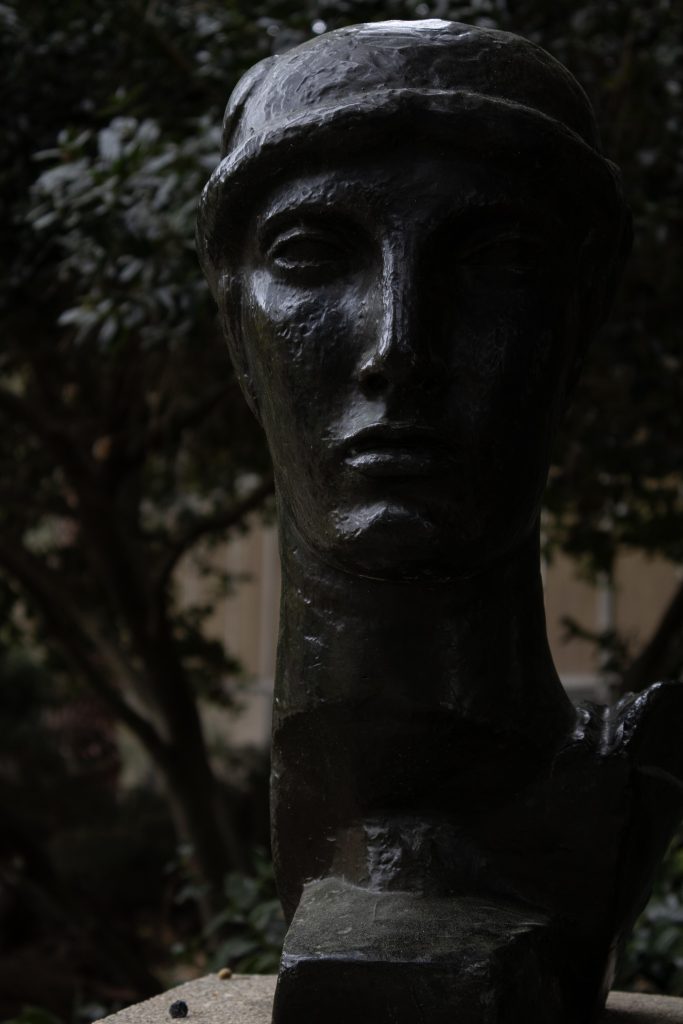
"Head of France" is a 1925 bust that stands at the southern end of the Franklin D. Murphy Sculpture Garden. It was created by French sculptor Émile-Antoine Bourdelle and gifted to the garden by B. Gerald Cantor in 1968. Photographed by Julia Gu/BruinLife.

